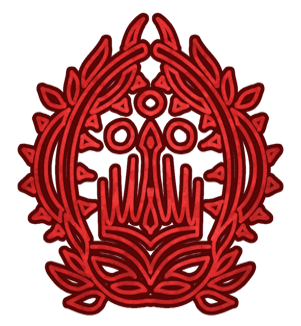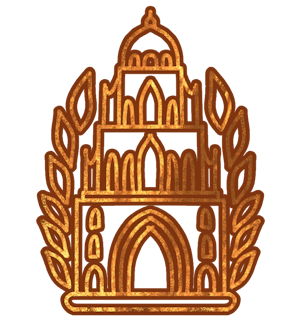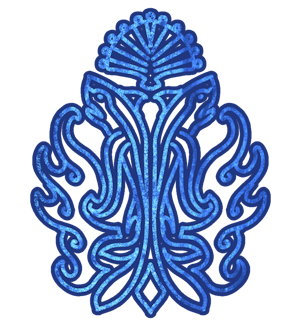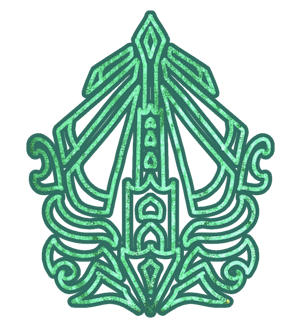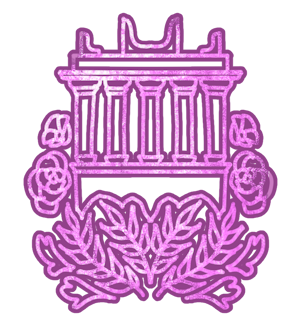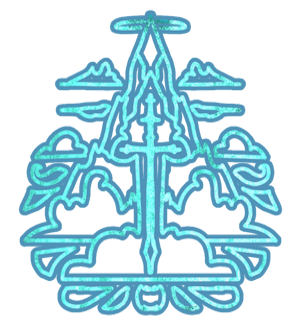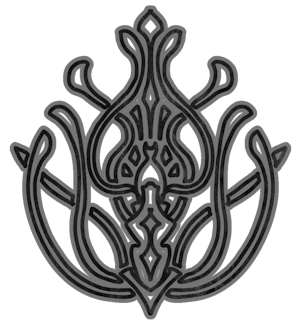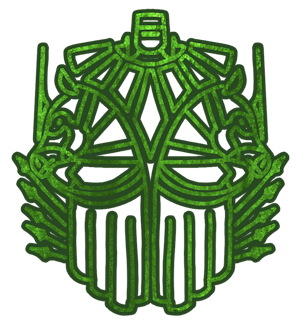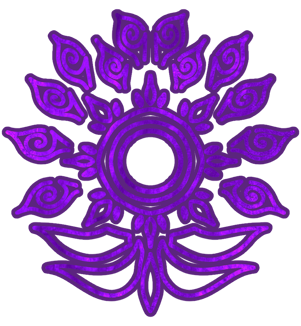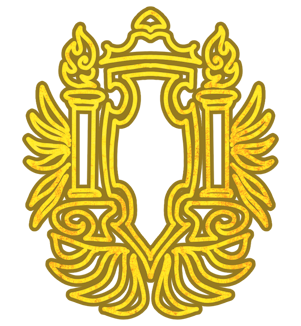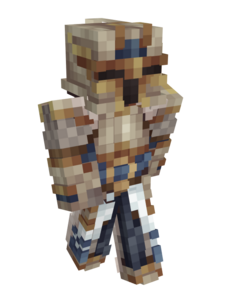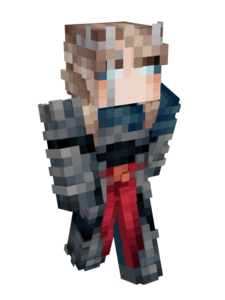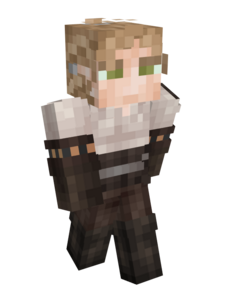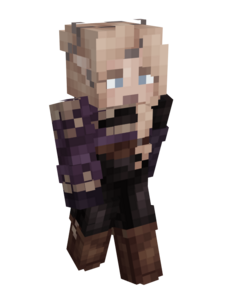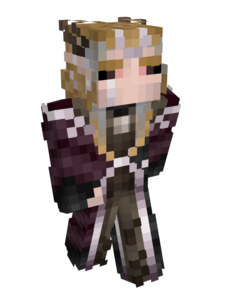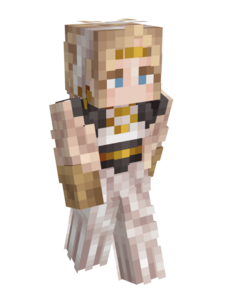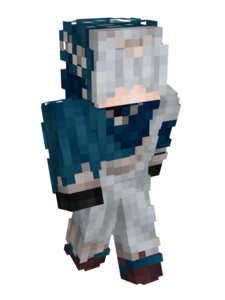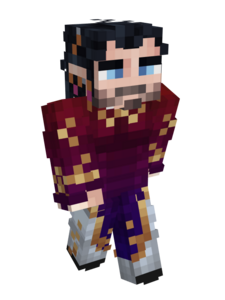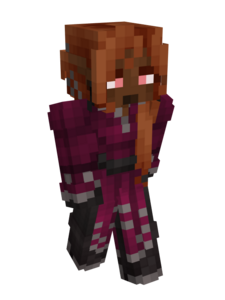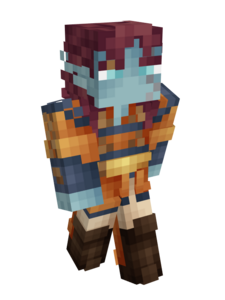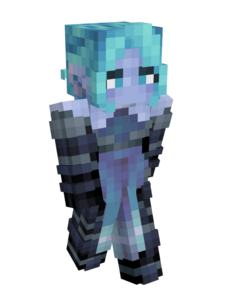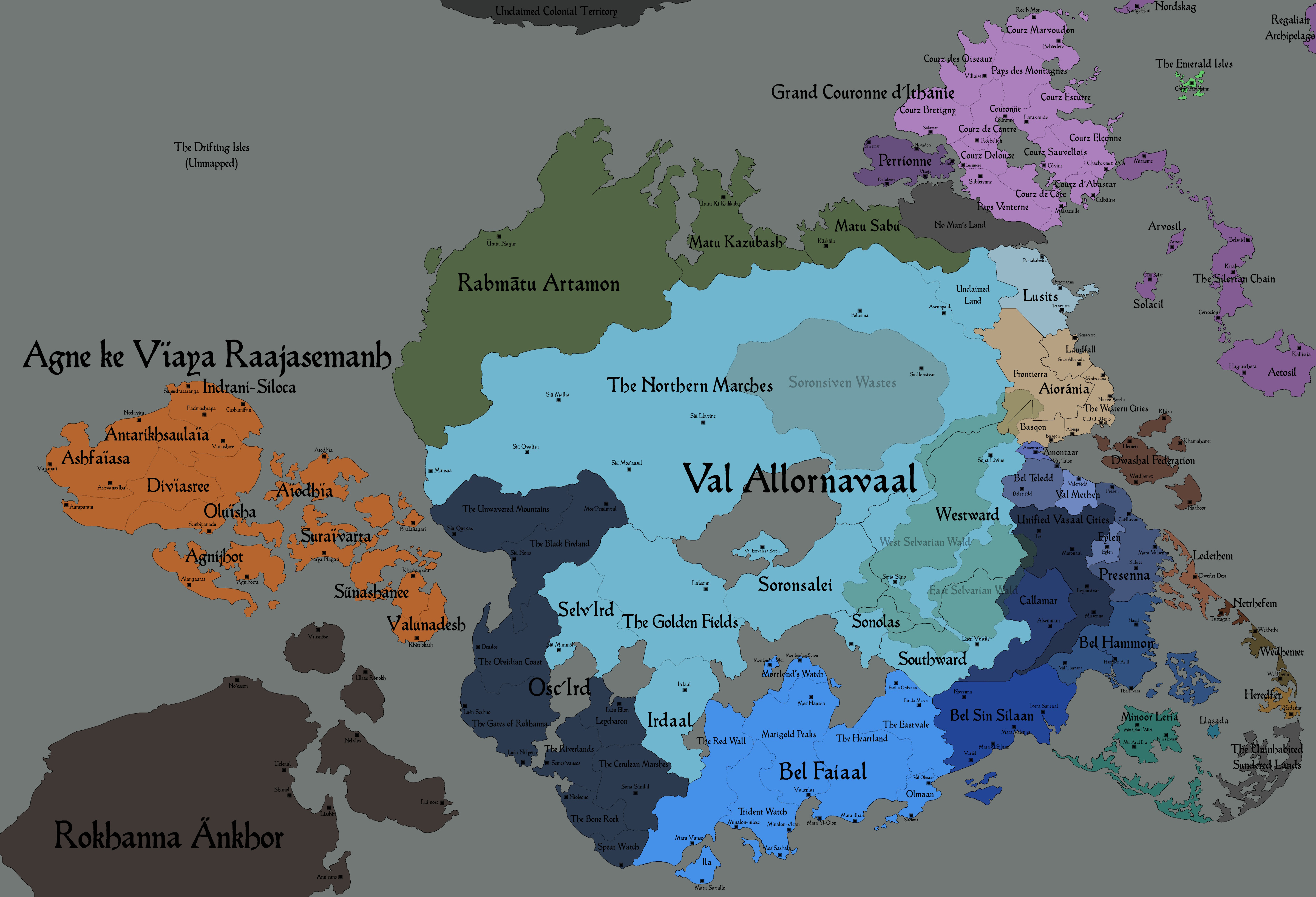More actions
No edit summary |
|||
| (20 intermediate revisions by 2 users not shown) | |||
| Line 16: | Line 16: | ||
==Physical Characteristics== | ==Physical Characteristics== | ||
Teled are High Elves. They have a wide variety of long, pointed ear shapes, all human skin tone ranges, and all human eye colour ranges plus some fantastical ones, such as sparkling moonlight silver or magenta, for example. Uniquely, Llasada culture Teled look more like mer-folk with tails and fins, while Solvaan culture Teled must always be blue-skinned. When Teled mix with other Heritages, their traits are often dominant, leading to Half-Elves. Most of them are quite tall, from the upper five foot range to the upper six foot range, with rare cases barely passing seven feet tall. Llasada and Pelyon culture Teled are the largest of them, while those from Minoor and Bel Hammon are smaller. Teled easily live to 400 years old, but the more Magically powerful can pass 1000 years or beyond. However, we strongly recommend that players keep their Characters under 150 years old. | Teled are High Elves. They have a wide variety of long, pointed ear shapes, all human skin tone ranges, all human hair colour ranges plus blue and green, and all human eye colour ranges plus some fantastical ones, such as sparkling moonlight silver or magenta, for example. Uniquely, Llasada culture Teled look more like mer-folk with tails and fins, while Solvaan culture Teled must always be blue-skinned. When Teled mix with other Heritages, their traits are often dominant, leading to Half-Elves. Most of them are quite tall, from the upper five foot range to the upper six foot range, with rare cases barely passing seven feet tall. Llasada and Pelyon culture Teled are the largest of them, while those from Minoor and Bel Hammon are smaller. Teled easily live to 400 years old, but the more Magically powerful can pass 1000 years or beyond. However, we strongly recommend that players keep their Characters under 150 years old. | ||
===Cultures=== | ===Cultures=== | ||
| Line 48: | Line 48: | ||
[[File:Minooremblem.png]] | [[File:Minooremblem.png]] | ||
</div> | </div> | ||
The '''Minoor''' culture are community-focused farmers who reject nationhood, Empires, and wealth. The suffering during the old Allorn Empire's collapse brought them as refugees to the island of Minoor Leria, a rural paradise from where the locals preach a return to simplicity. Many of them go to faraway lands to try to convert others to their point of view, but get swept up in the fact that life abroad isn't so simple. | The '''Minoor''' culture are community-focused farmers who reject nationhood, Empires, and wealth. The suffering during the old Allorn Empire's collapse brought them as refugees to what is now the island of Minoor Leria, a rural paradise from where the locals preach a return to simplicity. Many of them go to faraway lands to try to convert others to their point of view, but get swept up in the fact that life abroad isn't so simple. | ||
| style="width: 50%; padding: 5px"| | | style="width: 50%; padding: 5px"| | ||
<div class="res-img" style='text-align: left;float: left;width: 20%; padding-right: 5px;'> | <div class="res-img" style='text-align: left;float: left;width: 20%; padding-right: 5px;'> | ||
| Line 64: | Line 64: | ||
[[File:Pelyonemblem.png]] | [[File:Pelyonemblem.png]] | ||
</div> | </div> | ||
The '''Pelyon''' culture were | The '''Pelyon''' culture were assimilated by Ithanian (French) Ailor, and adopted many of their mannerisms, often following their Unionist Gods and serving the Regalian Empire in war. They are chivalric, knighthood-obsessed people who worship masculinity (in men and women both!) and war endlessly both among each other as a thousand tiny counties and abroad whenever a new conflict starts up for them to join. | ||
|- | |- | ||
| style="width: 50%; padding: 5px"| | | style="width: 50%; padding: 5px"| | ||
| Line 99: | Line 99: | ||
* '''[[Unionism]]''': A minority of Unionist Elves exist in Regalia. Large migrant populations of Solvaan and other cultures of Teled Elves have moved to Regalia over the past three centuries, which has led some to convert to the local faith which does have Elven representation. | * '''[[Unionism]]''': A minority of Unionist Elves exist in Regalia. Large migrant populations of Solvaan and other cultures of Teled Elves have moved to Regalia over the past three centuries, which has led some to convert to the local faith which does have Elven representation. | ||
* '''[[Aldurism]]''': Many Teled are strong in Magic, so the Mage Supremacist message of Aldurism appeals. However, Aldurism is a religion born of the Allorn Empire's decay and largely associated with the [[Kathar]] Dark Elves, so it remains a minority religion overshadowed by Estelley. | * '''[[Aldurism]]''': Many Teled are strong in Magic, so the Mage Supremacist message of Aldurism appeals. However, Aldurism is a religion born of the Allorn Empire's decay and largely associated with the [[Kathar]] Dark Elves, so it remains a minority religion overshadowed by Estelley. | ||
* '''[[Minor Faiths]], [[Evolism]]''': are represented in small minority groups, largely as a holdover from the Cult days | * '''[[Minor Faiths]], [[Evolism]]''': are represented in small minority groups, largely as a holdover from the Cult days. | ||
* '''[[Khama]], [[Fornoss]]''': These religions are rare among the Teled. Khama worship is antagonistic to | * '''[[Khama]], [[Fornoss]]''': These religions are rare among the Teled, except Fornoss worship (Xeradon), which is common among the Llasada. Khama worship, however, is antagonistic to the Elven Empire and history. It is not impossible, just hard mode. | ||
==Expanded Lore== | ==Expanded Lore== | ||
| Line 153: | Line 153: | ||
The Minoor, due to the wet and humid climate of their island homeland, cultivate an immense amount of rice. It is thanks to them that rice exports reach much of the Western world, as they are its main enjoyers in the vicinity barring the Suvial. Rice and shrimp or rice and pork preparations are very common among them, as are a wide range of grilled meat enjoyed communally, in which they can compete with the Finul for who did it better. The Solvaan, for their part, are excellent bakers. Besides Ailor pastries, which they learned how to make from the Anglians and imitate excellently, they produce the majority of native Elven baked goods, especially famous honey waffles. | The Minoor, due to the wet and humid climate of their island homeland, cultivate an immense amount of rice. It is thanks to them that rice exports reach much of the Western world, as they are its main enjoyers in the vicinity barring the Suvial. Rice and shrimp or rice and pork preparations are very common among them, as are a wide range of grilled meat enjoyed communally, in which they can compete with the Finul for who did it better. The Solvaan, for their part, are excellent bakers. Besides Ailor pastries, which they learned how to make from the Anglians and imitate excellently, they produce the majority of native Elven baked goods, especially famous honey waffles. | ||
When it comes to alcohol, the Teled have an exquisite range of wines, many of which are world-famous. They prefer dry-tasting reds, but have sweet options as well, and a few white wines particular to certain regions which are usually sparkling. Due to their immense lifespan, Teled also distill cognacs and a range of fruit and nut liqueurs which they consider desserts, usually not paired with meals themselves. In certain Cultures there is also a preference to Katharic mushroom wines and other psychoactive drinks. The Solvaan, as well, are individually famous for cirezzia, which is a very strong cherry brandy that non-Elves frequently mistake for wine and get far too drunk off of. | |||
===Teled and Magic=== | ===Teled and Magic=== | ||
| Line 164: | Line 166: | ||
==Individual Cultural Lore== | ==Individual Cultural Lore== | ||
Related to Expanded Lore, this section delves into unique information about the Teled subcultures that is not held in common between them. | Related to Expanded Lore, this section delves into unique information about the Teled subcultures that is not held in common between them. The Neo-Allorn and Amontaar cultures do not heavily differ from the main page, so their sections focus more on how they came about. | ||
====Neo-Allorn==== | ====Neo-Allorn==== | ||
Ever since the collapse of the Allorn Empire, there has been a cabal of Imperial loyalists attempting to bring about its return. Based in the ruins of the old capital, a covenant formed in the rubble of its desecrated buildings, these people have always called themselves the Blue Moon Society after the sigils on the cloaks of the Empress's palace guard. Their creed is simple enough: with enough willpower and enough mortal heroes, the trends of history can be reversed, and the Allorn nation can again reclaim world leadership from its usurping enemies. The Blue Moon Society remained a footnote of little notoriety throughout the 1st, 2nd, and even late 3rd centuries following Cataclysm. | |||
However, when around 300 AC the Regalian Empire massively increased its hostility towards the Allorn successor states and in 307 waged a brutal war of conquest in Presenna, their fortunes reversed. Despite being incredibly far from the fighting, they rode the wave of popularity to become the pre-eminent political group in post-Allorn society. Following the war with the Kathar Dread Empire in the south-west of the continent, and the Regalians' failure to negotiate them into vassalage, they executed a coup of many core Principalities and placed a cadet-descendant of the Allorn Imperial line back on the throne as Empress Olysara II. Since then, this Neo-Allorn Empire has expanded rapidly. | |||
It has entered into wars with the Suvial Princes in Agnevaal to the west and remained at war with the Kathar to the south. It has made treaties with the pro-Elven Regalian vassal Kingdom of Ithania with the ultimate goal of isolating Aioránia, the much more rebellious and Elf-hating Regalian vassal to the south, in the hopes it can eventually drag its land back into the Allorn sphere. Neo-Allorn Elves abroad carry some level of allegiance to either the Empress or the Blue Moon Society (which don't always agree), which seems at face value to make them anti-Regalian. However, the destinies of the Allorn and Regalian Empires don't necessarily have to collide: as long as they abandon Aioránia to its fate. | |||
====Amontaar==== | ====Amontaar==== | ||
Amontaar is a very, very old city. It was around at the founding of the Allorn Empire, and its ruling family the House of Samhaal have an uninterrupted line of succession back to even before the first Empress. This holding onto power is in no small part due to the direct patronage shown by the Estelley art Goddess Sapphora to them, protecting them from immortal evils, Demons and over-powerful Mages who might otherwise have toppled them in the late Allorn period when so many other prestigious families disappeared. The currently ruling Sol, Menveï, is a 400-year old Elf with ties to the court of the last Empress, one of her only living councilors. Countless secrets survive only with the crafty old man. | Amontaar is a very, very old city. It was around at the founding of the Allorn Empire, and its ruling family the House of Samhaal have an uninterrupted line of succession back to even before the first Empress. This holding onto power is in no small part due to the direct patronage shown by the Estelley art Goddess Sapphora to them, protecting them from immortal evils, Demons and over-powerful Mages who might otherwise have toppled them in the late Allorn period when so many other prestigious families disappeared. The currently ruling Sol, Menveï, is a 400-year old Elf with ties to the court of the last Empress, one of her only living councilors. Countless secrets survive only with the crafty old man. | ||
| Line 174: | Line 182: | ||
The native Amontaari themselves, whether they are Teled or from the city's culturally aligned Asha minority traditionally seen as patronized by the Sol as a counterweight to his vassals, tend to live by his House's motto: "Fight for Love". They are art-hungry, life-hungry, meaning-hungry. Many of the Elven world's best dramas and plays come directly from Amontaar, which always had a flair for the dramatic. Among the Teled they are the most dashing and politely spoken, who fall in and out of romance in a day, who can write pages and pages about a moment's feeling. Yet they are also incredibly patient people who never forget a grudge, and who like their overlord are willing to wait centuries purely for the catharsis of a rival's ruin, plotted on an apology they never knew they had to make. | The native Amontaari themselves, whether they are Teled or from the city's culturally aligned Asha minority traditionally seen as patronized by the Sol as a counterweight to his vassals, tend to live by his House's motto: "Fight for Love". They are art-hungry, life-hungry, meaning-hungry. Many of the Elven world's best dramas and plays come directly from Amontaar, which always had a flair for the dramatic. Among the Teled they are the most dashing and politely spoken, who fall in and out of romance in a day, who can write pages and pages about a moment's feeling. Yet they are also incredibly patient people who never forget a grudge, and who like their overlord are willing to wait centuries purely for the catharsis of a rival's ruin, plotted on an apology they never knew they had to make. | ||
====Finul==== | |||
The carousing, boisterous Finul are perhaps the oldest Teled culture to split from the main, and it shows. Comprised of the martial castes of the old Allorn Empire, the sailors, dockworkers, and soldiers, they are far from the graceful image traditionally associated with Elvenkind. The great love of the Finul is the sea, which they never seem to get quite enough of and never stray far from, populating the many coastal cities of the world where there is always work for them. Their biology too has attuned to match, giving them the power to transform into Merfolk and breathe underwater. It is a lifestyle that some of them embrace completely, leading out their entire existence below the waves. | |||
Since the Cataclysm, some of the more powerful Elven states have been led by Finul, who before then were never allowed too close to the seat of power. The armouries of Bel-Faiaal, their largest realm, sustain a navy matched only by the Regalian Empire's. Many of them have some degree of experience in Faiaal's Azure Fleet, where military service is the only way to get ahead in life. Such a career pits them against Sendrassian Allar and Asha Corsair pirates who raid Elven shipping, as well as the Kathar and sometimes Suvial fleets in military actions in the West. It is a life that is never boring, not even for a day, with the rush of experiences every time they dock giving it meaning. | |||
The Finul dress fancily and revealingly. Their main outfit is an all-covering but tight military sweater called a Loëlevaal (depicted in the fashion section), embroidered with their honours, regiment, and place of origin. However, they have a large variety of styles, each of them with a lower cleavage than the last. Finul just love to show off. They love to know that they are admired, and that other people respect their physicality, a sort of preening vainness that makes them much more alike their fellow Teled than their exteriors imply alone. They are also sporting people who love wrestling, javelin-throwing, running, and the other classical pursuits which are firmly their invention, as well as hunting. | |||
Due to their seaborne occupation, the Finul have a healthy respect for and fear of the Sea Gods. Many of them give warding prayers to especially the Evolist Demon God of the Sea, Morrlond, who is considered the most fearsome of them all. This does not mean that the Finul broadly worship him, but that they know he is real, and that he, his Demons, and his followers are dangerous. The widely circulated Estelley religious observation that Morrlond is in love with the Estelley Goddess Sinnavei means that Finul prayers to stay safe from his tempestuous anger, are usually gated through appealing to Sinnavei to tell her one true love to stay his hand this day, not appealing to him directly. | |||
====Bel Hammon==== | ====Bel Hammon==== | ||
Only a few things are understood about Bel Hammon. It is a state founded by an Archmage, its Mages are incredibly powerful, and they have absolutely no tolerance for intrusion. Many of the higher Arcane arts that were lost elsewhere are preserved here, jealously guarded as Bel Hammon's invention and advantage against the rest of the world. Its warlocks descend from a cutthroat society of carefully cultivated Mage bloodlines that kill one another over missteps. Within its borders, Arcane experimentation is pursued relentlessly with absolutely no respect to morality. | |||
Portraying a Bel Hammon Mage is difficult because their immorality is meant to be off-balanced by a power index that we cannot freely offer. However, as the Bel Hammon Elves frequently capture outsiders to experiment on or create Homunculi in their labs, the concept of the Bel Hammon culture is also available as an origin for Players who wish to play something or someone that escaped from their custody. Despite their legendary cruelty, the Bel Hammon culture retains a veneer of respect for Estellian religion and Elven custom, though many of them are Aldurists or Evolists. | |||
====Minoor==== | ====Minoor==== | ||
The Minoor emerged as the Allorn Empire collapsed, with thousands of refugees fleeing the destruction and chaos further north into the relatively quiet territory found to the far south-east of the Allorn Empire. Here were principalities of no note, and wilderness, with the future Minoor streaming into the latter where they might avoid the excesses of core Allorn society many in their number had begun to despise. When the Cataclysm came, and the great southern peninsula was broken with 70% of it sunk into the ocean’s depths, the Minoor felt vindicated in their opinion. They have continued to preach temperance in Magic, a rejection of the nation state, and tend to shun wealth. | |||
The Minoor view of Magic is curiously close to that of the Finul, believing it cheapens the hard work and effort an individual has put into the world. However, while the Minoor are not defenseless, their focus in this regard lies in agriculture and artisan work, not martial skills. The Minoor are also interesting as Estelley worshipers for this reason, commonly gravitating to Mana, Suellon, and Sapphora, but shunning other gods for their intensive use of Magic and violence. In addition, the Minoor have a fairly positive relationship with Felicula, who visits the city of Feliss Evaad semi-regularly. The Minoor are also unique for their awareness of, and anxieties about, The Deep Will, due to the neighboring Llasada and the destruction brought about the Cataclysm that created the modern Sundered Lands. Shunning totems, genuine and ineffective, dot the beaches to keep beasts of the ocean away from Minoor Leria and its neighboring islands. | |||
On that topic, the Minoor have a complicated relationship with other nations. At one time, their rejection of nationhood meant they did not conduct trade with outsiders, rejecting money as tainted by nationhood and imperialism. However, decades of time, and the growing menace of their neighbors, but also the reality of the world becoming more apparent to the Minoor, means that this tropical paradise now shares their produce with many nations. The Llasada, often take a bit extra, though they know their limits and generally only do so as an emergency maneuver when low on supplies for whatever reason. Stealing from a population that has such grand parties is viewed as pointless by them, not to mention the Mage States lurking nearby would not be pleased to have their trade with the Minoor disrupted despite the ideological differences between the groups. Minoor abroad, meanwhile, often accepted the flaws of the wider world, and while many continue to praise the systems of their homeland, can get worn down into cynics when they see how so many millions function without the Minoor ways. | |||
Minoor culture is one of great contrasts. Few people own anything personally, aside from objects deemed as important to one’s bloodline and history. Everything else is communal though to be clear, the Minoor do not randomly enter each other’s homes and take whatever they want. Instead, much of the Minoor landscape is rural, with communal storage palaces holding their goods which are then doled out as needed to the community by a rotating council of twenty-one senior scribes. The constant rain, good soil, and variety of flora and fauna mean that the Minoor are often working, and working hard, but when seasonal rains stop, and crops cannot be tended to any further, the Minoor throw grand parties that turn their trio of major cities into festival cities for as much as three weeks straight. The last detail about the Minoor is their hair: it is always green. While the shade can vary, from a deep emerald, to a seafoam blue-green, the hue only changes in half-Minoor or through dyes and other purposeful attempts to alter one’s appearance. Why their hair is green is not clear, but the locals like to claim it is due to their connection with the land. | |||
====Solvaan==== | ====Solvaan==== | ||
Over the course of the Allorn Empire, it dealt with its overpopulation by sending out waves of colonists to settle new parts of Daen, or the islands near Daen. When that was done, the first people began to cross the ocean to Corontium, the continent where the Regalian Empire sits now, and settle its outlying areas. The only one with significant Elven settlement is called Solleria, a mist-spun land where the thick fog holds many Magical monsters. It was this mist that would eventually mutate the Elven settlers into the people who are now called Solvaan. | |||
The early history of the Solvaan is somewhat shrouded. It is understood that a group of colonists secured the patronage of Sinnavei, previously the Estelley Goddess of Wayfarers, to protect them in their bid for new territory. They either displaced or killed the local Ailor tribes of Solleria, including their Gods of the Mist and the Land, and built overtop. So long has passed, however, that it is very difficult to understand what happened or why. The role of the Solvaan in modern history, though, is incredibly well documented. | |||
At the time of the Five Family Rebellion, or the founding of the Regalian Empire, the Solvaan threw in their lot entirely with the young Regalians at Sinnavei's bidding. As a result, they are a founding people of the Regalian nation, there with them in every war, in every government, by the side of the Ailor, hand in hand. The Solvaan are the most unequivocally pro-Regalian of the Teled. Regalia is their home, the house that they built, and compared to it tales of the Allorn Empire of the past feel hollow. The Solvaan are considered especially close with the Breizh Ailor, who are another martial culture who assisted in the Regalian founding years much like they did. | |||
For their help, the Solvaan were rewarded with a range of legal exceptions which remain to this day. They are a soldiering culture, with a famous Ducal army referred to as the Mist Wardens that exists separately from the [[Regalian Military]] and its Legions. This army has fought in all wars since Regalia's founding, usually in a special forces or support role, since the Solvaan skill with Magic is a historical rarity for Regalian troops. They are also the Empire's foremost mercenaries, but are 'mercenaries with honour,' who usually work off of a motive rather than for pay. Many Solvaan even go back to Daen to help protect and rebuild Presenna, in continuity with this sense of justice. | |||
The Solvaan culture deeply prizes loyalty and commitment. They tend to believe that they owe their success to rallying under Sinnavei, or under the Sollerian Duke or Duchess, instead of infighting like the Elves back in Daen. This extends to a loyalty to the Regalian Emperor, but not necessarily to the State structure if they do not like the people in it. The repressions of Magic in the 100s and 200s AC and the invasion of Presenna in 305 were done over the heads of the Solvaan and against their wishes. There is no naïvety among them that Regalia will always do the right thing, and so they politic and lobby to make sure things go their way. | |||
====Llasada==== | ====Llasada==== | ||
''The Llasada Expanded section is contingent on updates to their Religion, and will be written when that is.'' | |||
====Pelyon==== | ====Pelyon==== | ||
The Pelyon Teled are a relatively farflung, northern branch of Teled, on the island of the same name as their culture. While it underwent the same mixed transition to Ailor rule as did other Ithanian Ailor cultured regions, it managed to escape the rest of Ithania's incorporation into the Regalian Empire and persist until the [[Perrion War]] saw their forcible integration. The Pelyon are nonetheless a people who have taken largely well to Unionism, with many of them either outright Unionist or Syncretized somewhere in either direction between Unionism and Estelley. They are considered an Ithanian culture as the Perrion Ithanian Ailor, as well, but form a distinct Elven half to the whole. | |||
They are a heavily militarized people. They focus on the martial arts, with competence in weaponry cultivated in all citizens, alongside occasionally tactical knowledge and an understanding of siegecraft. It is for this siegecraft and for a love of blackpowder that they are especially famous, with their incessant internal petty warring giving them a penchant for knocking down castles. Compared to other Teled, they put little effort into glamour or vain appearances, dressing simply and often quite masculine. This is so firm that they have a culture-wide cult of masculinity, with buzz-cropped hair and rough styles, even (perhaps especially) on the women. | |||
Pelyon is ruled by a large number of Counts and Countesses, all of them equal in rank. These Counts feud with one another endlessly, their castles the site of years-long sieges which end when knightly codes of honor finally allow for decisive duels between champions with the victor taking some small token or concession as a reward to prove their valor and skill over the defeated. Deaths are uncommon, as these sieges are more like ritual conflict than brutal slugfests. Many of them then advance this expertise into the [[Regalian Military]] as a whole, taking advantage of their long lives to sample a little warfare everywhere in the world. | |||
More than the Solvaan, the Pelyon are also responsible for the transfer of Regalian technology back into the Elven world simply through observation. Regalian heavy cavalry techniques and cannon techniques were both first seen in the Principalities in Daen by Pelyon mercenaries bringing them south on pay, while Regalian literature only became seen as civilized for many Teled when the Pelyon popularized Elven versions of it. Their warlike, Spartan attitudes mean that both the other Elves and sometimes the Ithanian Ailor fail to give them proper credit for being a bridge between their peoples, but the Pelyon are the main reason that the barrier between the Ithanians and Elves is so thin it sometimes disappears. | |||
====Presenna==== | ====Presenna==== | ||
The Presenna culture arose around the great religious colleges of Estellian faith, in the Principality of the same name. It is a sprawling mangrove swamp that was tormented by Cataclysm's ravages, the land broken and hilly but nonetheless drenched by unceasing rain. While Presenna used to be among the richer Elven Principalities, the centuries following its destruction have not been kind to it. The Presenna Elves, like their land, are deeply fractured. They are the most pious of the Teled, sworn pacifists who pursue the message of the Gods in contemplation. | |||
Over the Allorn Empire's long history, many of the original words of the Gods, taken down in the Walking Tales, were distorted or destroyed. The clerical colleges at Presenna are in a constant mission to send journeymen around the world to recover missing pieces, or to do glorious favours for the Gods so that they can be persuaded to provide repeat recitation for certain segments. They have long prided themselves on their role as the equitable hosts of the Elven world, welcoming back far and wide members of the distant-flung Principalities, so long as they still profess Estelley. | |||
Much of this role was challenged by the Regalian invasion of Presenna in 305, formulated by jingoists who wanted to expand the Empire south into it. While the Presenna Elves had dealt with raids from Asha Corsairs, Bel-Hammon Mage incursions, and other trouble before, the brutality of the Ailor who killed many times more people than their previous opponents was unprecedented. While a leadership change in Regalia and the invasion of the Kathar from the other direction led to Presenna's eventual mutual defense, the people never forgot, and have a grudge to whet. | |||
Elves of all Cultures frequently go to Presenna to study religious texts or feel closer to the Estelley Gods, or to help in the reclamation efforts. Much of the old Principality is still lost to the swamps, and so teams of Elves digging to uncover and empty old ruins are not an uncommon sight. Frequently, teams that go to Presenna from Regalia return with a few Presenna Elves having accompanied them, enchanted by tales of that distant but familiar land, and hopeful that they can do some good there by spreading the good word of the Estelley Empresses to the local people. | |||
====Lanlath==== | ====Lanlath==== | ||
[[File:Sfafaf.png|center|1600px|caption]] | [[File:Sfafaf.png|center|1600px|caption]] | ||
The Lanlath live in Lathan (pictured above), a section of the Anima realm (another Dimension) annexed by the Lanlath with the blessing of the Estelley wisdom God Leyon. Leyon has always been a patron deity and protector of the Lanlath, ever since they first fled the Allorn Empire when their dissension to its brutal policies following the Dewamenet War threatened to get them killed. Its exit portals dot the island chains east of Daen (Mirtasil, Maartasil) with a few in Solleria in the Regalian Archipelago. The native Demons of the Anima, the Fae, have an uncanny respect for Leyon as their unofficial King and the only entity they seem to have no interest in pranking with their wicked sense of humour, simply letting him do as he wishes. Due to its suspension out of space, Lathan is a woodland realm caught in a permanent sunset which scatters across its pale towers. Originally a bare place with no native life of its own, the Lanlath have introduced docile deer and forest creatures to their valleys, most famously the giant Lathan Dove and luminescent Moon-Moth. | The Lanlath live in Lathan (pictured above), a section of the Anima realm (another Dimension) annexed by the Lanlath with the blessing of the Estelley wisdom God Leyon. Leyon has always been a patron deity and protector of the Lanlath, ever since they first fled the Allorn Empire when their dissension to its brutal policies following the Dewamenet War threatened to get them killed. Because of his protection, Lanlath from Lathan are '''not''' Veilwalkers unless they leave its safety or enter the Anima by another way. Its exit portals dot the island chains east of Daen (Mirtasil, Maartasil) with a few in Solleria in the Regalian Archipelago. The native Demons of the Anima, the Fae, have an uncanny respect for Leyon as their unofficial King and the only entity they seem to have no interest in pranking with their wicked sense of humour, simply letting him do as he wishes. Due to its suspension out of space, Lathan is a woodland realm caught in a permanent sunset which scatters across its pale towers. Originally a bare place with no native life of its own, the Lanlath have introduced docile deer and forest creatures to their valleys, most famously the giant Lathan Dove and luminescent Moon-Moth. | ||
Acting more like a mystic order than a state entity, the Lanlath have periodically appeared at important places in history to try to tip the scales, wearing ghostly armour woven of Magic light, riding astride noble warhorses with coats of white feathers. They believe that the great endeavour of Elvenkind is to act as benevolent guides and sages for the people who are ready to receive their information: councillors of the world order, not its tyrants. To this end, some of them have been seen at every potential turning point of the Allorn Empire, especially the Mage Wars, the Dregodar War, and Cataclysm itself, where a contingent of them tried to save the doomed last Empress, but could not. Critics are quick to point out that this attitude is just as patronizing and controlling as the Allorn imperial creed, only leadership by "command" is replaced by "advice" that the detractors of never seem to stay around for long. | Acting more like a mystic order than a state entity, the Lanlath have periodically appeared at important places in history to try to tip the scales, wearing ghostly armour woven of Magic light, riding astride noble warhorses with coats of white feathers. They believe that the great endeavour of Elvenkind is to act as benevolent guides and sages for the people who are ready to receive their information: councillors of the world order, not its tyrants. To this end, some of them have been seen at every potential turning point of the Allorn Empire, especially the Mage Wars, the Dregodar War, and Cataclysm itself, where a contingent of them tried to save the doomed last Empress, but could not. Critics are quick to point out that this attitude is just as patronizing and controlling as the Allorn imperial creed, only leadership by "command" is replaced by "advice" that the detractors of never seem to stay around for long. | ||
Whatever the case, the Lanlath are responsible at least for the codification and popularization of the Mend School (Healing Magic) among most cultures that first learned Magic from Elves. Their so-called Healing Houses dot the known world in major cities, especially in wartorn regions, where their clinicians see to the unwell and unwanted free of expectation. The Lanlath are also responsible for the "Starbirth" system of Mage alignment, where a Teaching Origin Mage is carefully guided into the appropriate Dimensional origin for their Magic that best suits their personality in a rite of passage towards adulthood, or where a Birth Origin Mage is given counseling to reduce the friction between their personality and their powers. | Whatever the case, the Lanlath are responsible at least for the codification and popularization of the Mend School (Healing Magic) among most cultures that first learned Magic from Elves. Their so-called Healing Houses dot the known world in major cities, especially in wartorn regions, where their clinicians see to the unwell and unwanted free of expectation. The Lanlath are also responsible for the "Starbirth" system of Mage alignment, where a Teaching Origin Mage is carefully guided into the appropriate Dimensional origin for their Magic that best suits their personality in a rite of passage towards adulthood, or where a Birth Origin Mage is given counseling to reduce the friction between their personality and their powers. | ||
All Lanlath ritualistically undergo Starbirth, so long as they are raised in Lathan. It is a multi-day process where they water fast while sitting in the ankle-high lotus water pool of an Estelley Temple, meditating on things that have been, are, and are yet to be. Leyon grants them visions, little shards of the many paths that their actions could lead them down, but rescuing them from ruin each time and righting them to safety. At the end, these visions always conclude with the Elf receiving them passing between statues of the three Estelley Empresses holding open the roof of a cave, which they leap into. Falling through the darkness, they are immersed in the sensations of their chosen Dimension, and awaken as an attuned Mage. | |||
In the modern day, the ruling Councils of the Lanlath seem to be prioritizing the struggle of the Sihndar in Drowda, the peaceful resolution of the war between the Suvial, Kathar, and Allorn Empires in western Daen, a sustainable end to the settler conflict between the Ailor and Elves in Aioránia, and the fostering of pan-Elvenism among parties both interested in resisting the Allorn Empire and not worse (to the Lanlath) in another way. They have a deep seated cultural rivalry with Elves from Bel Hammon, who they consider heartless torturers without ethics, and who consider them preening moralizers without anything meaningful to offer. | In the modern day, the ruling Councils of the Lanlath seem to be prioritizing the struggle of the Sihndar in Drowda, the peaceful resolution of the war between the Suvial, Kathar, and Allorn Empires in western Daen, a sustainable end to the settler conflict between the Ailor and Elves in Aioránia, and the fostering of pan-Elvenism among parties both interested in resisting the Allorn Empire and not worse (to the Lanlath) in another way. They have a deep seated cultural rivalry with Elves from Bel Hammon, who they consider heartless torturers without ethics, and who consider them preening moralizers without anything meaningful to offer. | ||
| Line 197: | Line 257: | ||
| subtexts = click this image to zoom to a larger version. | | subtexts = click this image to zoom to a larger version. | ||
}} | }} | ||
* '''Val Allornavaal:''' is the new Allorn Empire, re-founded in 305 AC by the ultranationalist cabal called the Blue Moon Society and nominally led by Allorn Empress | * '''Val Allornavaal:''' is the new Allorn Empire, re-founded in 305 AC by the ultranationalist cabal called the Blue Moon Society and nominally led by Allorn Empress Olysara, a descendant of the younger sister of the last Empress. It is an imperialist state at war with the Suvial (Agnevaal) and Kathar (Rokhanna) to the west. Its northern garrison cities against the Eronidas are considered the minor Ordonna Teled culture. | ||
* '''Amontaar''' is the homeland of the Amontaari, a massive tradeport and diplomatic nerve centre. It is the residence of the Estelley art Goddess Sapphora, and ruled by the royal House of Samhaal, a famous Elven noble house. All trade between Regalia and the Teled nations flows through Amontaar, and all nations have embassies in it. | * '''Amontaar''' is the homeland of the Amontaari, a massive tradeport and diplomatic nerve centre. It is the residence of the Estelley art Goddess Sapphora, and ruled by the royal House of Samhaal, a famous Elven noble house. All trade between Regalia and the Teled nations flows through Amontaar, and all nations have embassies in it. | ||
* '''Bel Faiaal:''' is the homeland of the Finul, which leases its fleet to the Allorn Empire as leverage in exchange for its freedom. The Faiaali defend the continent from the Sendrassians, the Kathar, the Suvial, and Asha Corsairs, with a long naval military tradition. They are a proud, self interested nation that looks out for themselves. | * '''Bel Faiaal:''' is the homeland of the Finul, which leases its fleet to the Allorn Empire as leverage in exchange for its freedom. The Faiaali defend the continent from the Sendrassians, the Kathar, the Suvial, and Asha Corsairs, with a long naval military tradition. They are a proud, self interested nation that looks out for themselves. | ||
Latest revision as of 01:22, 28 March 2025
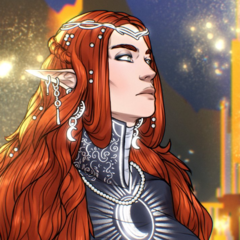 | |
| Mechanics | |
| Religions | |
| Related | None yet • None yet • None yet |
Teled, sometimes Teledden or just Elves, are the most common Elves. They are the second most numerous people in the world, just behind the short-lived Ailor. Teled are defined by their millennia-old Allorn Empire, which ruled the known world for most of history before collapsing spectacularly. Its descendants still thrive in politics, art, Magic and trade, but are no longer as unified as they once were, and must now adjust to a world where they are no longer the ones in command. Still, the Teled are powerful, glorious and ancient, and mortal heroes leading the charge have given them renewed hope for better days.
Physical Characteristics
Teled are High Elves. They have a wide variety of long, pointed ear shapes, all human skin tone ranges, all human hair colour ranges plus blue and green, and all human eye colour ranges plus some fantastical ones, such as sparkling moonlight silver or magenta, for example. Uniquely, Llasada culture Teled look more like mer-folk with tails and fins, while Solvaan culture Teled must always be blue-skinned. When Teled mix with other Heritages, their traits are often dominant, leading to Half-Elves. Most of them are quite tall, from the upper five foot range to the upper six foot range, with rare cases barely passing seven feet tall. Llasada and Pelyon culture Teled are the largest of them, while those from Minoor and Bel Hammon are smaller. Teled easily live to 400 years old, but the more Magically powerful can pass 1000 years or beyond. However, we strongly recommend that players keep their Characters under 150 years old.
Cultures
The Teled have many cultures, which split apart during their thousands of years of Empire. Technically, all Elves were once Teled or could be grouped with Teled, but many of them have branched into their own Heritages. People cluster the cultures below as Teled enough to keep the name, defining them as one Heritage collectively. Each culture has expanded lore further down, but is explained here. You should choose one for your Teled.
|
The Neo-Allorn culture misses the fallen Allorn Empire, and wants to bring it back. Five years ago, playing off of fear caused by foreign invasions, looting, and destruction, they crowned a descendant of the last Empress and declared a string of wars against the split-off Elven nations. They are insidious, deceitful plotters who are nonetheless poised and graceful. In the present, they seek conquest to restore the lost glories of the past. |
The Amontaar culture is from the city-state of the same name, a center of commerce and diplomacy. The Amontaari have the patronage of the Elven art Goddess, Sapphora, and with that luxury have avoided being conquered. As a people, they have always had to cultivate social connections, a willingness to listen, and the right to mediate to make sure they come out on top. Many of them come to Regalia because it feels like home. |
|
The Finul culture are carousing sailors and soldiers from the low castes of the old Allorn Empire. Rough people, they are wild, loud, and passionate, abandoning the poise that most associate with Teled. The Finul love the sea, and can be found in any port around the world looking for something new to experience. What they lack in their people's traditional talent with Magic, they make up for in physicality honed across centuries. |
The Bel Hammon culture hail from a Mage cabal turned state, famous for its arcane excesses. Since Bel Hammon's borders are closed to outsiders, they are mistrusted by the wider world as immoral warlocks who care little for morality or the value of life. Nonetheless, this fear of their intent is balanced with respect for their power, and somehow even in the places that hate them the most, a Bel Hammon Mage always seems to be at work. |
|
The Minoor culture are community-focused farmers who reject nationhood, Empires, and wealth. The suffering during the old Allorn Empire's collapse brought them as refugees to what is now the island of Minoor Leria, a rural paradise from where the locals preach a return to simplicity. Many of them go to faraway lands to try to convert others to their point of view, but get swept up in the fact that life abroad isn't so simple. |
The Solvaan culture left the Allorn Empire early and settled among humans, taking up a role patrolling the mists of their native Solleria. As hunters and mercenaries, they are a core part of the human Regalian Empire and its earliest supporters. Trained on the monster-filled Sollerian wilds, many of them make pilgrimage back to Daen to protect the Elves who cannot protect themselves from the horrors the Empire's fall left behind. |
|
The Llasada culture were once Finul, but abandoned the Elven Gods to worship deep sea horrors instead. In so doing, they turned to a life of piracy, despised by other Elves. They are cutthroats, who take from the weak whatever they can get their hands on and carry away. There is a fierce love-hate between them and the Finul, who fight as pirate against soldier for command of the sea but are all too easily smitten with each other. |
The Pelyon culture were assimilated by Ithanian (French) Ailor, and adopted many of their mannerisms, often following their Unionist Gods and serving the Regalian Empire in war. They are chivalric, knighthood-obsessed people who worship masculinity (in men and women both!) and war endlessly both among each other as a thousand tiny counties and abroad whenever a new conflict starts up for them to join. |
|
The Presenna culture are from the Principality of the same name, the homeland of the Elven faith and its clergy. Despite their religiosity, they have been ravaged by centuries of warfare, pillaging corsairs, and foreign invasions, suffering greatly for their defenselessness and devotion to religion. The Regalian Empire invaded Presenna a decade ago and behaved brutally before leaving, which many Elves have sore feelings over. |
The Lanlath are a mystic order of dissidents who fled the Allorn Empire near its inception in protest of its cruelty. Only numbering around a hundred thousand total, they live in the Anima Dimension among the Fae, emerging from their well-hidden portals in times of need to strike a blow against their Allorn enemy. In Regalia, Lanlath are considered incredibly valuable, benevolent Arcane advisors without the immorality of Bel Hammon. |
There are technically more Teled Cultures, but these are the ones with noteworthy populations and good interactions in Roleplay. If you want to play another culture of Teled, make a Ticket.
Teled in Regalia
Teled come to Regalia for many reasons. For complex details, please consult the Elven Geography section of this page, since it is much more thorough. However, to summarize, Teled can either come from inside the Regalian Empire, the played setting, or outside of it.
If your Teled is from inside the Regalian Empire, then their reasons for coming to the capital city, Regalia, are more or less just like anyone else's. The Solvaan and Pelyon, especially, tend to self-define as Regalian citizens. Due to their long lives and highly specialized professions, Teled tend to work in stable jobs with desired talents, and know that they can come to the capital to make a lot of money. If they are political, or deeply religious, perhaps they are coming to the capital to lobby for their worldview in what they know is the center of power.
If your Teled is from outside the Regalian Empire, it is more complicated. A Neo-Allorn Teled might come to subvert the Empire for the sake of their reborn nation, while a Presenna Teled might come to preach, or because their Temple was burned down in the Regalian invasion a decade ago. Generally speaking, to play a Teled from a foreign nation, go to the Elven Geography section and examine the lore relevant to their culture, then figure out a reason for them to journey to the capital. Other motivations can be pulled from the Culture entries as-is.
Language and Naming
All Teled Elves speak the Altalar language, though each Culture has its own accent or dialect. In Aloria, Altalar is the ancestor of the Romance languages like in-universe French (d'Ithanie) and Spanish (Droque), whose Human ancestors were once Elven subjects. The "adios", "gracias", and "hola" found in Droque, for example, come from Altalar "alïas", "ce'las", and "äula". While using fantasy Elven works for Altalar, it's more lore accurate to work backwards from Spanish to make Altalar words. Masculine Altalar names often end with 'N' (ex. Erhennen) or 'L' (ex. Isendal), while feminine Altalar names often end with 'A' (ex. Talintra) or 'S' (ex. Devaris).
- Some example Male names: Ëandrel (Daniel), Lusyas (Lucas), Näul (Raul), Noveyn (Robert), Orlën (Jorge), Malsayn (Marcus), Alosso (Alfonso).
- Some example Female names: Samila (Camilla), Isaveyl (Isabel), Salia (Natalia), Savnëlla (Gabriella), Nassissa (Fransisca), Eyra (Eva).
- Some example Unisex names: Sil (Gil), Alessë (Alex), Tani (Dani), Esmedara (Esmeralda), Eismë (Jaime), Savia (Gabi), Cimme (Kim).
Traditional Elven names end with Bel- followed by the city the Elf is from. For example, an Elf named Noveyn Selven was from a city called Eylen, he would introduce himself as Noveyn Selven Bel-Eylen. Elves from old families often have very long names, sometimes six or seven names long, including the titles of famous ancestors or poetic epithets. Even so, among foreigners they tend to leave these out.
Religions
- Estelley: Estelley is followed by almost all Teled Elves. Estellianism is for and by Elves, so much so that its Gods are often called the Elven Gods, despite the existence of other types of Elves who don't follow them. The Teled enjoy strong connections to all Estelley Gods.
- Draconism: Draconism was purged in a civil war in the late Allorn Empire, around seven hundred years ago. The survivors fled to another continent and became Isldar. That said, a few pockets of Draconist Teled remain who did not want to or could not leave the Empire.
- Unionism: A minority of Unionist Elves exist in Regalia. Large migrant populations of Solvaan and other cultures of Teled Elves have moved to Regalia over the past three centuries, which has led some to convert to the local faith which does have Elven representation.
- Aldurism: Many Teled are strong in Magic, so the Mage Supremacist message of Aldurism appeals. However, Aldurism is a religion born of the Allorn Empire's decay and largely associated with the Kathar Dark Elves, so it remains a minority religion overshadowed by Estelley.
- Minor Faiths, Evolism: are represented in small minority groups, largely as a holdover from the Cult days.
- Khama, Fornoss: These religions are rare among the Teled, except Fornoss worship (Xeradon), which is common among the Llasada. Khama worship, however, is antagonistic to the Elven Empire and history. It is not impossible, just hard mode.
Expanded Lore
The Expanded Lore contains additional information about playing a Teled. The Expanded Lore is not necessary reading, but can be used for a more complex experience.
Customs and Habits
The Customs and Habits section contains additional information about how Teled culture teaches Teled to behave.
Teled culture puts much value in eloquence. They have a vast literary body with poetry, music, and art encouraged over their millennia of Empire that emphasized to citizens that the right way to behave flowed down from the upper class, and the best thing to do was to be like the nobility. As a result, even common Teled language is flush with references to famous plays and poems that the layman is expected to simply understand. This kind of expectation, as if real-world English speakers casually quoted Shakespeare in reference to ongoing situations, can make the language of especially the older Teled feel somewhat dusty, somewhat flowery.
Because of this speaking style, non-Elves like to say that Elves, and Teled most of all, do not know how to be directly insulting. This is strictly not true, but is a product of how Elven phrases translate into Common. Common vulgarities like "bastard" come straight from Altalar, but have a much longer and much worse meaning in Elven language that was lost during Human simplification. Elves love to insult beauty, especially subtle details to get under someone's skin and prey on their insecurities, and they also love to insult lineage and the standing of one's family, as well as their target's achievements and how they'll be remembered.
Of course, this exists on a spectrum. Neo-Allorn, Lanlath, and Presenna Teled tend to be haughtier and more closed off, while Finul and Llasada can express the same scathing, eloquent sentences in a much louder way. Certainly, the body language of those two cultures in particular is more animated. These bawdy sailor Elves see nothing wrong with causing a scene, or with 'dumbing down' their angle of attack so that 'even a barbarian could understand it'. They are also much quicker to bloodshed, considering duels an acceptable way to settle insults. Some among them enjoy the adrenaline high so much that they go out of their way to provoke them.
There are a few gestures shared between Elves. The traditional greeting is to bow deeply and extend one's arm forward with the palm upward, as if offering them a scroll, usually with the other hand placed over the chest. In combative situations, in place of spitting, the middle finger, or other gestures which are considered unclean, Elves tend to raise one hand and clap the back of the other into its palm, making a sharp noise. Showing the proper formalities is especially important when dealing with the older generation, for whom causing offense in the wrong house was deadly.
Families, Society and Romance
The Families, Society and Romance section contains additional information about Teled society's formal structure.
Teled care greatly about their lineage. Every Teled can recite multiple generations back of their family and recite a famous action of an ancestor, or tie to nobility somewhere. If these claims do not truly exist, then sometimes they are fabricated. Because of the relative wealth of Elves, non-Elves like to push the claim that every Elf is a noble in Elven society, but this is not quite correct. There is internal classism (more accurately casteism) between Teled, where the Noble and Mage classes, historically more powerful, look down on the manual laborers among cultures like the Finul and Minoor who load ships and till fields for a living.
This care for lineage projects into a care for romance, or 'marrying the right person.' Once suffocating in the old Allorn Empire, where marriages were arranged to produce more powerful Mage families over the wishes of the people in them, nowadays many young Elves date and marry for love, to the head-shaking consternation of their parents. Though the stereotype lingers that Teled take decades to commit, and perhaps their nobility in the Allorn crownlands do, in places like Regalia where the social structure does not judge them for holding hands this has more or less waned away.
In Teled society, government is relatively simply structured. Citizens form a council, which together is an advisory body to a theoretically absolute Sol, the ruler of the city and its surrounding area, called a Sollay. Any number of Sollays are loyal to a Prince, who is a more important Sol with jurisdiction over his equals nominated by an Emperor or Empress to hold control. Independent Princedoms have warred with each other in periods of weak Imperial control, and became their own countries after the old Allorn Empire collapsed. In Regalia, due to the Baron under Count under Duke title progression system, new types of Sol titles have been invented, like Sol-Elector.
Most Elven-heritage nations (even non-Teled) tend to base their common law on something called Artarel's Law or the Justiciar's Codex, named after the Estelley Goddess Artarel, who wrote it. It puts emphasis on equality under the law and the right to be judged by one's peers, as well as innocence until proven guilty, which are generally considered good traits by outsiders. However, it is also an inquisitorial system where the judge participates directly, and the defendant and prosecutor are forced to speak for themselves without counsel. This, and the original version's blunt enforcement of Estellianism as the state religion without exceptions, make it imperfect.
Fashions
The Fashions section contains some visual examples of Teled dress to help with ideas.
-
Allorn armour
-
Allorn armour
-
Modern masc clothes
-
Modern fem clothes
-
Traditional masc clothes
-
Traditional fem clothes
-
Monk masc clothes
-
Monk fem clothes
-
Finul masc clothes
-
Finul fem clothes
-
Solvaan masc clothes
-
Solvaan fem clothes
Food and Drink
The Food and Drink section contains additional information about how Teled cook.
Teled have a strong hospitality culture. They, and other Elves, are habitual tea drinkers with an expensive love for rare varieties. Far exceeding even real-world options, fantasy horticulture has allowed the Teled to meld tastes, invent entirely new tastes, and Alchemically synthesize extinct shrubs from bygone eras to stock their pantries. Their kettles are heated with a particular type of rocks called Eelt-Stones which glow blue and become incredibly hot when splashed with water, while the vessels themselves are ornately decorated with plant iconography.
Other than that, Teled cuisine is usually disparaged by other societies as being incredibly leafy and bland. This is not a false accusation, with flower-petal salads and delicate tinctured tastes making up the full of the often vegetarian Neo-Allorn and Lanlath palate, even salt absent from their preparation. The Finul, Llasada, Minoor, and Solvaan together provide some saving grace. Finul and Llasada cooking is maritime, with raw fish, seaweed, grilled and prepared fish, and fermented fish sauce all playing strong roles across different dishes. Their grilled squid and octopus also enjoys a good reputation.
The Minoor, due to the wet and humid climate of their island homeland, cultivate an immense amount of rice. It is thanks to them that rice exports reach much of the Western world, as they are its main enjoyers in the vicinity barring the Suvial. Rice and shrimp or rice and pork preparations are very common among them, as are a wide range of grilled meat enjoyed communally, in which they can compete with the Finul for who did it better. The Solvaan, for their part, are excellent bakers. Besides Ailor pastries, which they learned how to make from the Anglians and imitate excellently, they produce the majority of native Elven baked goods, especially famous honey waffles.
When it comes to alcohol, the Teled have an exquisite range of wines, many of which are world-famous. They prefer dry-tasting reds, but have sweet options as well, and a few white wines particular to certain regions which are usually sparkling. Due to their immense lifespan, Teled also distill cognacs and a range of fruit and nut liqueurs which they consider desserts, usually not paired with meals themselves. In certain Cultures there is also a preference to Katharic mushroom wines and other psychoactive drinks. The Solvaan, as well, are individually famous for cirezzia, which is a very strong cherry brandy that non-Elves frequently mistake for wine and get far too drunk off of.
Teled and Magic
For an abridged version, please consult the relevant table entries at Societies_and_Magic#Heritages.
Teled adore Magic. From the very beginning, the Estellian religion enshrined being a good Mage as a virtue. It was skill with Magic that, ultimately, proliferated so much that it ripped the Allorn Empire apart and precipitated Demon Worship and other religions from the inside as Mages became so unaccountable that they took over the offices of State and made the Empress a prisoner in her own palace. This sobering experience in the waning millennium of Allorn history has not reduced the Teled enthusiasm for everything Magical, which they still practice with freedom and abandon.
That said, Teled are not stupid. However much they adore the use of spellcraft, obviously unsightly, dangerous, Curse-laden, Demon-inviting, or destructive forms of Magic are regulated and expunged. Their academies do not have patience for Mages who cannot control themselves or prove a liability to those around them, cycling them back into the general population to learn some discipline before their skillset can be expanded. Unlike Regalians, Teled do not destroy tomes on Dark Magic or regulate recording of its existence, but are still very careful about its application.
An exception lies in the Finul, and by extension, the Pelyon and Llasada. Forming a martial class, sometimes a laborer class, the Finul always prided themselves more on honed physicality than spell work, and in fact actively shun the use of Magic in the military. This has its roots in the fact that a single Mage is a very powerful but also unpredictable asset that is often impossible to replace. Spears can be re-forged, infantry re-trained, and cannons re-cast, but if an army relies on a Mage that is then assassinated, it becomes doomed. As a result of this chauvinism, there are many Finul who are born Mages but do not bother to much hone their skill, instead learning the sword and the lance.
Individual Cultural Lore
Related to Expanded Lore, this section delves into unique information about the Teled subcultures that is not held in common between them. The Neo-Allorn and Amontaar cultures do not heavily differ from the main page, so their sections focus more on how they came about.
Neo-Allorn
Ever since the collapse of the Allorn Empire, there has been a cabal of Imperial loyalists attempting to bring about its return. Based in the ruins of the old capital, a covenant formed in the rubble of its desecrated buildings, these people have always called themselves the Blue Moon Society after the sigils on the cloaks of the Empress's palace guard. Their creed is simple enough: with enough willpower and enough mortal heroes, the trends of history can be reversed, and the Allorn nation can again reclaim world leadership from its usurping enemies. The Blue Moon Society remained a footnote of little notoriety throughout the 1st, 2nd, and even late 3rd centuries following Cataclysm.
However, when around 300 AC the Regalian Empire massively increased its hostility towards the Allorn successor states and in 307 waged a brutal war of conquest in Presenna, their fortunes reversed. Despite being incredibly far from the fighting, they rode the wave of popularity to become the pre-eminent political group in post-Allorn society. Following the war with the Kathar Dread Empire in the south-west of the continent, and the Regalians' failure to negotiate them into vassalage, they executed a coup of many core Principalities and placed a cadet-descendant of the Allorn Imperial line back on the throne as Empress Olysara II. Since then, this Neo-Allorn Empire has expanded rapidly.
It has entered into wars with the Suvial Princes in Agnevaal to the west and remained at war with the Kathar to the south. It has made treaties with the pro-Elven Regalian vassal Kingdom of Ithania with the ultimate goal of isolating Aioránia, the much more rebellious and Elf-hating Regalian vassal to the south, in the hopes it can eventually drag its land back into the Allorn sphere. Neo-Allorn Elves abroad carry some level of allegiance to either the Empress or the Blue Moon Society (which don't always agree), which seems at face value to make them anti-Regalian. However, the destinies of the Allorn and Regalian Empires don't necessarily have to collide: as long as they abandon Aioránia to its fate.
Amontaar
Amontaar is a very, very old city. It was around at the founding of the Allorn Empire, and its ruling family the House of Samhaal have an uninterrupted line of succession back to even before the first Empress. This holding onto power is in no small part due to the direct patronage shown by the Estelley art Goddess Sapphora to them, protecting them from immortal evils, Demons and over-powerful Mages who might otherwise have toppled them in the late Allorn period when so many other prestigious families disappeared. The currently ruling Sol, Menveï, is a 400-year old Elf with ties to the court of the last Empress, one of her only living councilors. Countless secrets survive only with the crafty old man.
Since Cataclysm, when most of his army died riding into battle with the last Empress, he has had to fend off countless invasions of his rich trading port, countless attempts to remove him from his own greedy Nobility and other Elven Princes, and countless attempts from the Tierravera Ailor to expand the frontier south by annexing his country. Having successfully quashed every single one with a combination of good timing and back-alley assassination of his enemies, the most famous being his defeat of a mercenary invasion under Augustin Roca only a few short years ago, he now enjoys a sort of legendary status among his citizens as the undefeatable symbol of their City.
Amontaar is a complicated place. It is widely held to be the most beautiful of the Elven metropoli, better than the Allorn capital in its heyday, but it is unforgivingly brutal to the people who do not play the game of its society. It has no use for someone unwilling to attend its parties, smile to its notables, and shake hands with its foreign guests to make sure that its independence can continue to be assured. Amontaar's cutthroat bankers squeeze foreigners who don't read what they sign for everything they have, while disrespecting the Sol or his family can get anyone, no matter how important they are, blacklisted from its world-influencing soirées or liquor tastings.
The native Amontaari themselves, whether they are Teled or from the city's culturally aligned Asha minority traditionally seen as patronized by the Sol as a counterweight to his vassals, tend to live by his House's motto: "Fight for Love". They are art-hungry, life-hungry, meaning-hungry. Many of the Elven world's best dramas and plays come directly from Amontaar, which always had a flair for the dramatic. Among the Teled they are the most dashing and politely spoken, who fall in and out of romance in a day, who can write pages and pages about a moment's feeling. Yet they are also incredibly patient people who never forget a grudge, and who like their overlord are willing to wait centuries purely for the catharsis of a rival's ruin, plotted on an apology they never knew they had to make.
Finul
The carousing, boisterous Finul are perhaps the oldest Teled culture to split from the main, and it shows. Comprised of the martial castes of the old Allorn Empire, the sailors, dockworkers, and soldiers, they are far from the graceful image traditionally associated with Elvenkind. The great love of the Finul is the sea, which they never seem to get quite enough of and never stray far from, populating the many coastal cities of the world where there is always work for them. Their biology too has attuned to match, giving them the power to transform into Merfolk and breathe underwater. It is a lifestyle that some of them embrace completely, leading out their entire existence below the waves.
Since the Cataclysm, some of the more powerful Elven states have been led by Finul, who before then were never allowed too close to the seat of power. The armouries of Bel-Faiaal, their largest realm, sustain a navy matched only by the Regalian Empire's. Many of them have some degree of experience in Faiaal's Azure Fleet, where military service is the only way to get ahead in life. Such a career pits them against Sendrassian Allar and Asha Corsair pirates who raid Elven shipping, as well as the Kathar and sometimes Suvial fleets in military actions in the West. It is a life that is never boring, not even for a day, with the rush of experiences every time they dock giving it meaning.
The Finul dress fancily and revealingly. Their main outfit is an all-covering but tight military sweater called a Loëlevaal (depicted in the fashion section), embroidered with their honours, regiment, and place of origin. However, they have a large variety of styles, each of them with a lower cleavage than the last. Finul just love to show off. They love to know that they are admired, and that other people respect their physicality, a sort of preening vainness that makes them much more alike their fellow Teled than their exteriors imply alone. They are also sporting people who love wrestling, javelin-throwing, running, and the other classical pursuits which are firmly their invention, as well as hunting.
Due to their seaborne occupation, the Finul have a healthy respect for and fear of the Sea Gods. Many of them give warding prayers to especially the Evolist Demon God of the Sea, Morrlond, who is considered the most fearsome of them all. This does not mean that the Finul broadly worship him, but that they know he is real, and that he, his Demons, and his followers are dangerous. The widely circulated Estelley religious observation that Morrlond is in love with the Estelley Goddess Sinnavei means that Finul prayers to stay safe from his tempestuous anger, are usually gated through appealing to Sinnavei to tell her one true love to stay his hand this day, not appealing to him directly.
Bel Hammon
Only a few things are understood about Bel Hammon. It is a state founded by an Archmage, its Mages are incredibly powerful, and they have absolutely no tolerance for intrusion. Many of the higher Arcane arts that were lost elsewhere are preserved here, jealously guarded as Bel Hammon's invention and advantage against the rest of the world. Its warlocks descend from a cutthroat society of carefully cultivated Mage bloodlines that kill one another over missteps. Within its borders, Arcane experimentation is pursued relentlessly with absolutely no respect to morality.
Portraying a Bel Hammon Mage is difficult because their immorality is meant to be off-balanced by a power index that we cannot freely offer. However, as the Bel Hammon Elves frequently capture outsiders to experiment on or create Homunculi in their labs, the concept of the Bel Hammon culture is also available as an origin for Players who wish to play something or someone that escaped from their custody. Despite their legendary cruelty, the Bel Hammon culture retains a veneer of respect for Estellian religion and Elven custom, though many of them are Aldurists or Evolists.
Minoor
The Minoor emerged as the Allorn Empire collapsed, with thousands of refugees fleeing the destruction and chaos further north into the relatively quiet territory found to the far south-east of the Allorn Empire. Here were principalities of no note, and wilderness, with the future Minoor streaming into the latter where they might avoid the excesses of core Allorn society many in their number had begun to despise. When the Cataclysm came, and the great southern peninsula was broken with 70% of it sunk into the ocean’s depths, the Minoor felt vindicated in their opinion. They have continued to preach temperance in Magic, a rejection of the nation state, and tend to shun wealth.
The Minoor view of Magic is curiously close to that of the Finul, believing it cheapens the hard work and effort an individual has put into the world. However, while the Minoor are not defenseless, their focus in this regard lies in agriculture and artisan work, not martial skills. The Minoor are also interesting as Estelley worshipers for this reason, commonly gravitating to Mana, Suellon, and Sapphora, but shunning other gods for their intensive use of Magic and violence. In addition, the Minoor have a fairly positive relationship with Felicula, who visits the city of Feliss Evaad semi-regularly. The Minoor are also unique for their awareness of, and anxieties about, The Deep Will, due to the neighboring Llasada and the destruction brought about the Cataclysm that created the modern Sundered Lands. Shunning totems, genuine and ineffective, dot the beaches to keep beasts of the ocean away from Minoor Leria and its neighboring islands.
On that topic, the Minoor have a complicated relationship with other nations. At one time, their rejection of nationhood meant they did not conduct trade with outsiders, rejecting money as tainted by nationhood and imperialism. However, decades of time, and the growing menace of their neighbors, but also the reality of the world becoming more apparent to the Minoor, means that this tropical paradise now shares their produce with many nations. The Llasada, often take a bit extra, though they know their limits and generally only do so as an emergency maneuver when low on supplies for whatever reason. Stealing from a population that has such grand parties is viewed as pointless by them, not to mention the Mage States lurking nearby would not be pleased to have their trade with the Minoor disrupted despite the ideological differences between the groups. Minoor abroad, meanwhile, often accepted the flaws of the wider world, and while many continue to praise the systems of their homeland, can get worn down into cynics when they see how so many millions function without the Minoor ways.
Minoor culture is one of great contrasts. Few people own anything personally, aside from objects deemed as important to one’s bloodline and history. Everything else is communal though to be clear, the Minoor do not randomly enter each other’s homes and take whatever they want. Instead, much of the Minoor landscape is rural, with communal storage palaces holding their goods which are then doled out as needed to the community by a rotating council of twenty-one senior scribes. The constant rain, good soil, and variety of flora and fauna mean that the Minoor are often working, and working hard, but when seasonal rains stop, and crops cannot be tended to any further, the Minoor throw grand parties that turn their trio of major cities into festival cities for as much as three weeks straight. The last detail about the Minoor is their hair: it is always green. While the shade can vary, from a deep emerald, to a seafoam blue-green, the hue only changes in half-Minoor or through dyes and other purposeful attempts to alter one’s appearance. Why their hair is green is not clear, but the locals like to claim it is due to their connection with the land.
Solvaan
Over the course of the Allorn Empire, it dealt with its overpopulation by sending out waves of colonists to settle new parts of Daen, or the islands near Daen. When that was done, the first people began to cross the ocean to Corontium, the continent where the Regalian Empire sits now, and settle its outlying areas. The only one with significant Elven settlement is called Solleria, a mist-spun land where the thick fog holds many Magical monsters. It was this mist that would eventually mutate the Elven settlers into the people who are now called Solvaan.
The early history of the Solvaan is somewhat shrouded. It is understood that a group of colonists secured the patronage of Sinnavei, previously the Estelley Goddess of Wayfarers, to protect them in their bid for new territory. They either displaced or killed the local Ailor tribes of Solleria, including their Gods of the Mist and the Land, and built overtop. So long has passed, however, that it is very difficult to understand what happened or why. The role of the Solvaan in modern history, though, is incredibly well documented.
At the time of the Five Family Rebellion, or the founding of the Regalian Empire, the Solvaan threw in their lot entirely with the young Regalians at Sinnavei's bidding. As a result, they are a founding people of the Regalian nation, there with them in every war, in every government, by the side of the Ailor, hand in hand. The Solvaan are the most unequivocally pro-Regalian of the Teled. Regalia is their home, the house that they built, and compared to it tales of the Allorn Empire of the past feel hollow. The Solvaan are considered especially close with the Breizh Ailor, who are another martial culture who assisted in the Regalian founding years much like they did.
For their help, the Solvaan were rewarded with a range of legal exceptions which remain to this day. They are a soldiering culture, with a famous Ducal army referred to as the Mist Wardens that exists separately from the Regalian Military and its Legions. This army has fought in all wars since Regalia's founding, usually in a special forces or support role, since the Solvaan skill with Magic is a historical rarity for Regalian troops. They are also the Empire's foremost mercenaries, but are 'mercenaries with honour,' who usually work off of a motive rather than for pay. Many Solvaan even go back to Daen to help protect and rebuild Presenna, in continuity with this sense of justice.
The Solvaan culture deeply prizes loyalty and commitment. They tend to believe that they owe their success to rallying under Sinnavei, or under the Sollerian Duke or Duchess, instead of infighting like the Elves back in Daen. This extends to a loyalty to the Regalian Emperor, but not necessarily to the State structure if they do not like the people in it. The repressions of Magic in the 100s and 200s AC and the invasion of Presenna in 305 were done over the heads of the Solvaan and against their wishes. There is no naïvety among them that Regalia will always do the right thing, and so they politic and lobby to make sure things go their way.
Llasada
The Llasada Expanded section is contingent on updates to their Religion, and will be written when that is.
Pelyon
The Pelyon Teled are a relatively farflung, northern branch of Teled, on the island of the same name as their culture. While it underwent the same mixed transition to Ailor rule as did other Ithanian Ailor cultured regions, it managed to escape the rest of Ithania's incorporation into the Regalian Empire and persist until the Perrion War saw their forcible integration. The Pelyon are nonetheless a people who have taken largely well to Unionism, with many of them either outright Unionist or Syncretized somewhere in either direction between Unionism and Estelley. They are considered an Ithanian culture as the Perrion Ithanian Ailor, as well, but form a distinct Elven half to the whole.
They are a heavily militarized people. They focus on the martial arts, with competence in weaponry cultivated in all citizens, alongside occasionally tactical knowledge and an understanding of siegecraft. It is for this siegecraft and for a love of blackpowder that they are especially famous, with their incessant internal petty warring giving them a penchant for knocking down castles. Compared to other Teled, they put little effort into glamour or vain appearances, dressing simply and often quite masculine. This is so firm that they have a culture-wide cult of masculinity, with buzz-cropped hair and rough styles, even (perhaps especially) on the women.
Pelyon is ruled by a large number of Counts and Countesses, all of them equal in rank. These Counts feud with one another endlessly, their castles the site of years-long sieges which end when knightly codes of honor finally allow for decisive duels between champions with the victor taking some small token or concession as a reward to prove their valor and skill over the defeated. Deaths are uncommon, as these sieges are more like ritual conflict than brutal slugfests. Many of them then advance this expertise into the Regalian Military as a whole, taking advantage of their long lives to sample a little warfare everywhere in the world.
More than the Solvaan, the Pelyon are also responsible for the transfer of Regalian technology back into the Elven world simply through observation. Regalian heavy cavalry techniques and cannon techniques were both first seen in the Principalities in Daen by Pelyon mercenaries bringing them south on pay, while Regalian literature only became seen as civilized for many Teled when the Pelyon popularized Elven versions of it. Their warlike, Spartan attitudes mean that both the other Elves and sometimes the Ithanian Ailor fail to give them proper credit for being a bridge between their peoples, but the Pelyon are the main reason that the barrier between the Ithanians and Elves is so thin it sometimes disappears.
Presenna
The Presenna culture arose around the great religious colleges of Estellian faith, in the Principality of the same name. It is a sprawling mangrove swamp that was tormented by Cataclysm's ravages, the land broken and hilly but nonetheless drenched by unceasing rain. While Presenna used to be among the richer Elven Principalities, the centuries following its destruction have not been kind to it. The Presenna Elves, like their land, are deeply fractured. They are the most pious of the Teled, sworn pacifists who pursue the message of the Gods in contemplation.
Over the Allorn Empire's long history, many of the original words of the Gods, taken down in the Walking Tales, were distorted or destroyed. The clerical colleges at Presenna are in a constant mission to send journeymen around the world to recover missing pieces, or to do glorious favours for the Gods so that they can be persuaded to provide repeat recitation for certain segments. They have long prided themselves on their role as the equitable hosts of the Elven world, welcoming back far and wide members of the distant-flung Principalities, so long as they still profess Estelley.
Much of this role was challenged by the Regalian invasion of Presenna in 305, formulated by jingoists who wanted to expand the Empire south into it. While the Presenna Elves had dealt with raids from Asha Corsairs, Bel-Hammon Mage incursions, and other trouble before, the brutality of the Ailor who killed many times more people than their previous opponents was unprecedented. While a leadership change in Regalia and the invasion of the Kathar from the other direction led to Presenna's eventual mutual defense, the people never forgot, and have a grudge to whet.
Elves of all Cultures frequently go to Presenna to study religious texts or feel closer to the Estelley Gods, or to help in the reclamation efforts. Much of the old Principality is still lost to the swamps, and so teams of Elves digging to uncover and empty old ruins are not an uncommon sight. Frequently, teams that go to Presenna from Regalia return with a few Presenna Elves having accompanied them, enchanted by tales of that distant but familiar land, and hopeful that they can do some good there by spreading the good word of the Estelley Empresses to the local people.
Lanlath

The Lanlath live in Lathan (pictured above), a section of the Anima realm (another Dimension) annexed by the Lanlath with the blessing of the Estelley wisdom God Leyon. Leyon has always been a patron deity and protector of the Lanlath, ever since they first fled the Allorn Empire when their dissension to its brutal policies following the Dewamenet War threatened to get them killed. Because of his protection, Lanlath from Lathan are not Veilwalkers unless they leave its safety or enter the Anima by another way. Its exit portals dot the island chains east of Daen (Mirtasil, Maartasil) with a few in Solleria in the Regalian Archipelago. The native Demons of the Anima, the Fae, have an uncanny respect for Leyon as their unofficial King and the only entity they seem to have no interest in pranking with their wicked sense of humour, simply letting him do as he wishes. Due to its suspension out of space, Lathan is a woodland realm caught in a permanent sunset which scatters across its pale towers. Originally a bare place with no native life of its own, the Lanlath have introduced docile deer and forest creatures to their valleys, most famously the giant Lathan Dove and luminescent Moon-Moth.
Acting more like a mystic order than a state entity, the Lanlath have periodically appeared at important places in history to try to tip the scales, wearing ghostly armour woven of Magic light, riding astride noble warhorses with coats of white feathers. They believe that the great endeavour of Elvenkind is to act as benevolent guides and sages for the people who are ready to receive their information: councillors of the world order, not its tyrants. To this end, some of them have been seen at every potential turning point of the Allorn Empire, especially the Mage Wars, the Dregodar War, and Cataclysm itself, where a contingent of them tried to save the doomed last Empress, but could not. Critics are quick to point out that this attitude is just as patronizing and controlling as the Allorn imperial creed, only leadership by "command" is replaced by "advice" that the detractors of never seem to stay around for long.
Whatever the case, the Lanlath are responsible at least for the codification and popularization of the Mend School (Healing Magic) among most cultures that first learned Magic from Elves. Their so-called Healing Houses dot the known world in major cities, especially in wartorn regions, where their clinicians see to the unwell and unwanted free of expectation. The Lanlath are also responsible for the "Starbirth" system of Mage alignment, where a Teaching Origin Mage is carefully guided into the appropriate Dimensional origin for their Magic that best suits their personality in a rite of passage towards adulthood, or where a Birth Origin Mage is given counseling to reduce the friction between their personality and their powers.
All Lanlath ritualistically undergo Starbirth, so long as they are raised in Lathan. It is a multi-day process where they water fast while sitting in the ankle-high lotus water pool of an Estelley Temple, meditating on things that have been, are, and are yet to be. Leyon grants them visions, little shards of the many paths that their actions could lead them down, but rescuing them from ruin each time and righting them to safety. At the end, these visions always conclude with the Elf receiving them passing between statues of the three Estelley Empresses holding open the roof of a cave, which they leap into. Falling through the darkness, they are immersed in the sensations of their chosen Dimension, and awaken as an attuned Mage.
In the modern day, the ruling Councils of the Lanlath seem to be prioritizing the struggle of the Sihndar in Drowda, the peaceful resolution of the war between the Suvial, Kathar, and Allorn Empires in western Daen, a sustainable end to the settler conflict between the Ailor and Elves in Aioránia, and the fostering of pan-Elvenism among parties both interested in resisting the Allorn Empire and not worse (to the Lanlath) in another way. They have a deep seated cultural rivalry with Elves from Bel Hammon, who they consider heartless torturers without ethics, and who consider them preening moralizers without anything meaningful to offer.
Elven Geography
This section showcases the geography of the Elven world, centered around the new Allorn Empire (Val Allornavaal). It contains basic lore about each one. The Geography page (WIP) contains further detail.
- Val Allornavaal: is the new Allorn Empire, re-founded in 305 AC by the ultranationalist cabal called the Blue Moon Society and nominally led by Allorn Empress Olysara, a descendant of the younger sister of the last Empress. It is an imperialist state at war with the Suvial (Agnevaal) and Kathar (Rokhanna) to the west. Its northern garrison cities against the Eronidas are considered the minor Ordonna Teled culture.
- Amontaar is the homeland of the Amontaari, a massive tradeport and diplomatic nerve centre. It is the residence of the Estelley art Goddess Sapphora, and ruled by the royal House of Samhaal, a famous Elven noble house. All trade between Regalia and the Teled nations flows through Amontaar, and all nations have embassies in it.
- Bel Faiaal: is the homeland of the Finul, which leases its fleet to the Allorn Empire as leverage in exchange for its freedom. The Faiaali defend the continent from the Sendrassians, the Kathar, the Suvial, and Asha Corsairs, with a long naval military tradition. They are a proud, self interested nation that looks out for themselves.
- Presenna: is the homeland of the Presenna, and the heart of Estellian religion. Many of its great Temples have been ruined by Cataclysm and invasion, and its pacifist people rely on other Teled to protect them from their would-be conquerors.
- Osc'ird is a majority Kathar nation. It agreed to join the new Allorn Empire, but has become a graveyard battleground between the Allorn Empire, the Suvial (Agnevaal), and the other Kathar (Rokhanna). There is a Teled minority here, considered the minor Ashyaal Teled culture.
- Bel Sin Silaan & Bel Hammon: are Archmage-founded and Mage-Cabal led nations. Bel Hammon is the more important of the two, which gives its name to the Bel Hammon culture. Both are sealed off with impermeable Magic shields. The world can only speculate what vile Magic and experimentation occurs there.
- Minoor Leria: is the fertile, humid Minoor homeland. Bel Sin Silaan and Bel Hammon separate it from the Allorn Empire. Its excellent weather provides for their agrarian state.
- Llasada: is a pirate haven for the Llasada culture. It has no formal cities, only coastal enclaves filled with vast statues of the dark horrors of the deep oceans and the ocean Gods.
- Callamar & Unified Vasaal Cities: are wealthy places aligned with Amontaar, separated from the Allorn Empire by the Selvath Freefolk.
- Val Methen & Bel Teledd: are Teled microstates with varying populations that have entirely surrendered their politics to Amontaar.
- Aioránia: is the homeland of the Tierravera Ailor, who were Allorn subjects but killed their lords in Cataclysm. Still, and even though the Tierravera hate Elves, there are many Teled there. Some align Neo-Allorn, some Amontaar, but the old natives are considered the minor Dassal Teled culture.
- Perrionne: is the homeland of the Pelyon. It is under direct Regalian rule, part of the Kingdom of Ithania, but is autonomous. Its Counts wage endless petty wars with one another, in a feudal society where many Ailor practices have been adopted, but the Pelyon keep some traditions alive.
- Ithanie: is the homeland of the Ithanian Ailor, successor to the northern Allorn Kingdom of Ithicalon, whose Princes voluntarily gave up power to the Ailor and choose to rule together. While it is a Unionist Kingdom and a core part of Regalia, its large Teled population continue to be influential and maintain their traditions, considered the minor Ithalon Teled culture.
- Solacil: is another Tierravera Ailor nation, but one where the Ailor and Teled get along much better. It is the only majority Aldurism worshiping state in the Regalian Empire, and a hotbed for political groups that try to reconcile the Regalian and Allorn Empires at the expense of Aioránia.
History
Elven history is vast, because the Allorn Empire existed for nearly 15,000 years. While this history is rich and important, it is also mostly not immediately relevant to the lives of most Elves. You can read it separately on the Allorn History page (WIP). However, those parts which are relevant are discussed here under the Allorn Legacy section below.
Allorn Legacy
The Teled had a 15,000 year long Allorn Empire, founded in the victory of Magic over the Technology of the Dewamenet (Asha) Empire which tried to stamp out their nascent civilization. Over the course of this Empire, its expansion trampled uncountable heritages and cultures, eradicating them as the Elves built over their former nations. In revenge on the defeated Asha, successive Empresses forgot the tragedies of the original war, and encouraging their populations went on so-called Pearl Wars to hunt down their fleeing people and sacrifice them for Arcane power. The social stress of the mounting Imperial atrocity and the runaway power of Mages began to split Elven culture at the seams.
There were always distinct peoples, like the Freefolk who are still Elves but were never subjugated by the Allorn Empire, or the Lanlath who left early at the first revolting action. However, the most aggressive diversification of Elves happened around Cataclysm 300 years ago, the Magical disaster and Demonic invasion that killed the last Empress and ended the Allorn Empire, fracturing it into depopulated states and paving the way for the human Regalian Empire to rise in its wake.
Every type of Elf that is not Teled defines itself by opposition to the Teled at some point in history, for example the Isldar who were purged for their Dragon Worship in a bloody civil war and fled to another continent, or the Kathar who embraced the Demon Worship cults of the late Allorn Empire and are arguably truer successors to its name than the modern Teled, who are revisionists hearkening back to an earlier era of Elven culture before the Empire's collapse. This, and the Allorn cruelty that the very much alive Asha and vengeful Ailor remember, is still very real and something that Teled have to deal with.
Effectively, every Teled must self-examine at least a little bit how they feel about the legacy that their ancestors left them. A glorious, stable Empire with world-changing advancements in Magic, built on the corpses of everyone who refused to bow to the yoke and accept second-class status as its non-core citizens, fueled by the fire of its sacrificed enemies, denied even the Afterlife. Some are Allorn apologists who equivocate about the dark parts of its legacy and defend its actions, some are Allorn realists who condemn the most needlessly excessive parts but still onboard the rest, and some are Allorn abolitionists who still see themselves as Teled, but refuse to embrace any concept of a unified Elven Empire.
This is further complicated by the fact that Regalia has treated foreign Teled in lands it has invaded with exquisite cruelty of its own. When Regalia invaded Presenna in the Presenna Conflict just a decade ago, civilians were executed for being above a certain age, priests were boiled or burned alive in front of their own flocks, and holy groves were cut down with their worshipers beheaded. This senseless brutality, not some independent choice on the part of the Elves, was what enabled ultra-nationalist Teled cultists to revive the Allorn Empire with fire and brimstone preaching.
Teled are fully embraced citizens inside the Regalian Empire, and even enjoy a beloved status among the Ithanian culture. Those born inside its borders who stay within regions where the cultures enjoy Elves may feel perfectly integrated. However, both the painful Allorn legacy and the painful Elven present can be examined for a more complex set of feelings on the part of your Elven character.
Why Play Teled
Because you like Teled. And winning. Teled win a lot. This is your reward for having reached the bottom: the great arcane mystery passed down from the depths of the Allorn past: Teled are great at winning. Sometimes this works out just fine. Sometimes it doesn’t. I don't care what they are going to say. Let the Allorn Empire rage on. The people have spoken!
